Il comportamento dei consumatori nel marketing
Il comportamento dei consumatori nel marketing | Il tuo istinto è sicuramente efficace ma deve essere accompagnato dall'analisi dei dati.
6 marzo 2020
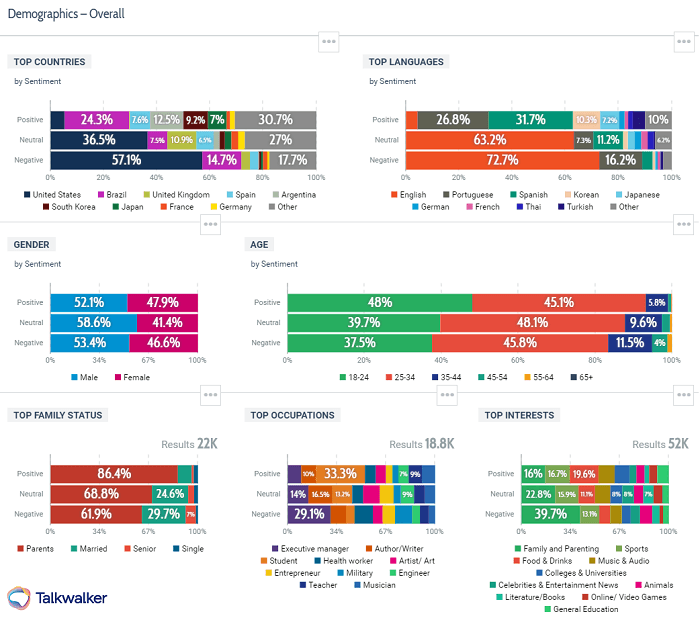
- Indice
- Cos'è il comportamento dei consumatori?
- Perché è importante comprendere il comportamento dei consumatori?
- Cos'è un audit del comportamento del consumatore?
- Quali sono i modelli di comportamento dei consumatori?
- Quali sono le tipologie di comportamento dei consumatori?
- 4 tipi di modelli decisionali di acquisto?
- Cosa influenza il comportamento dei consumatori?
- Segmentazione del comportamento dei consumatori
- Modello di indagine del comportamento dei consumatori
Analisi del comportamento del consumatore
Non affidarti solo all’istinto. Scarica il template gratuito di analisi del comportamento del consumatore, redatto per te dalla piattaforma #1 di Consumer Intelligence.
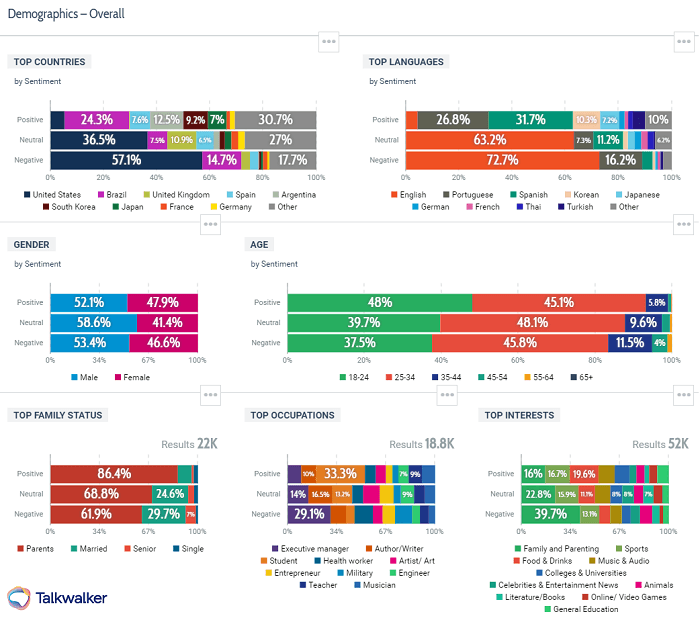
Talkwalker Analytics - analisi della demografia dei consumatori di Coca-Cola.
Indice
Cos'è il comportamento dei consumatori?
Si tratta del processo decisionale, le influenze e le azioni del consumatore all'atto dell'acquisto.
Analizza e identifica il processo decisionale del consumatore e conduci un’indagine sul suo comportamento: sarai in grado di progettare il tuo marketing in maniera efficace.
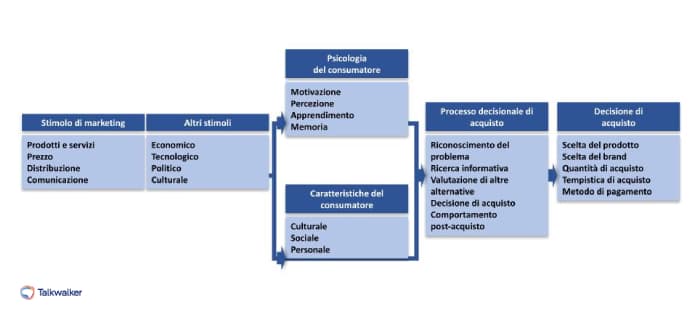
Modello del comportamento dei consumatori. Puoi scaricare il template qui.
Perché è importante comprendere il comportamento dei consumatori?
Comprendere, analizzare e tracciare il comportamento del consumatore è di fondamentale importanza per ogni tipo di business.
Che opinione hanno i consumatori del tuo brand e/o dei tuoi prodotti e di quelli dei tuoi concorrenti?
Perché scelgono il prodotto A anziché il prodotto B?
In che modo cercano un brand e/o un prodotto?
Quanto sono importanti le recensioni dei consumatori per la loro ricerca - contenuti creati dall’utente?
Preferiscono acquistare online o offline?
L'analisi del sentiment di Talkwalker ti mostrerà l’opinione dei consumatori sul tuo brand.
Riconoscere ciò che influenza le decisioni di acquisto dei consumatori, sia online che offline, ti consentirà di presentare il tuo brand e i tuoi prodotti in modo più seducente. Creare un customer journey positivo, fluido e senza ostacoli, incoraggerà i consumatori a mettere mano al portafogli.
In base a Salesforce, il 76% dei consumatori si aspetta che le aziende riconoscano le loro necessità e aspettative. Vogliono essere capiti. Solo così potrai vendergli i tuoi prodotti in maniera efficace.
Quante decisioni si prendono ogni giorno? “Cosa voglio per pranzo? Voglio andare a prendere un caffè? Dovrei comprarli questi jeans?”
Comprendere la mentalità del consumatore consente ai team marketing di utilizzare tali informazioni per meglio indirizzare le proprie strategie e aumentare gli introiti.
Ad esempio, quante volte sei stat* in fila alla cassa e hai gettato nel carrello una di quelle barrette di cioccolata posizionate in maniera strategica? O magari sei sul punto di cliccare sul tasto "compralo ora", quando ti metti a spiare gli articoli acquistati da altri consumatori. La FOMO, ossia la paura di essere tagliati fuori, è forte! Nel tuo carrello finisce più roba. Ne hai bisogno?

Sei mai stato tentato di acquistare qualcosa solamente perché qualcun altro lo ha fatto?
Effettua un’analisi socio-demografica della tua base di consumatori...
Fascia d’età dei consumatori
Ubicazione geografica
Stile di vita dei consumatori
Stato sociale dei consumatori
Ma non pensare di conoscere i tuoi consumatori senza aver effettuato ricerche e verifiche approfondite.
Cos'è un audit del comportamento del consumatore?
È parte della pianificazione di marketing.
Esamina il comportamento dei consumatori all’inizio della tua pianificazione di marketing e continua ad effettuare indagini per tutta la sua durata. Valuta i fattori interni ed esterni che influenzano il tuo piano.
La tua indagine sui consumatori delineerà opportunità e minacce, individuando possibili variazioni e miglioramenti del tuo piano di marketing. La checklist per l’indagine sul comportamento dei consumatori ti aiuterà a rispondere alla domanda: “Qual è l’attuale situazione del marketing?”
Per effettuare la tua indagine, dovrai includere...
I tuoi obiettivi SMART. Ma tali obiettivi possono essere stabiliti solo comprendendo la propria posizione attuale...
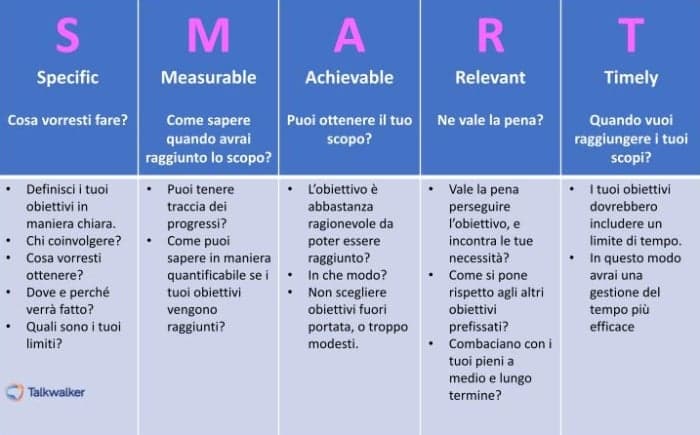
SMART - specifico, misurabile, attuabile, rilevante, puntuale.
Pianifica obiettivi efficaci e raggiungibili...
Specific - numeri reali con scadenze reali
Measurable - dovrai avere la possibilità di monitorare e valutare i tuoi risultati
Achievable - fissa un obiettivo stimolante ma possibile
Relevant - assicurati di avere le risorse per raggiungere l’obiettivo
Timely - devi poter stabilire quando raggiungerai il tuo obiettivo
Dovresti già disporre di diverse analisi SWOT per la tua azienda e per i tuoi concorrenti.
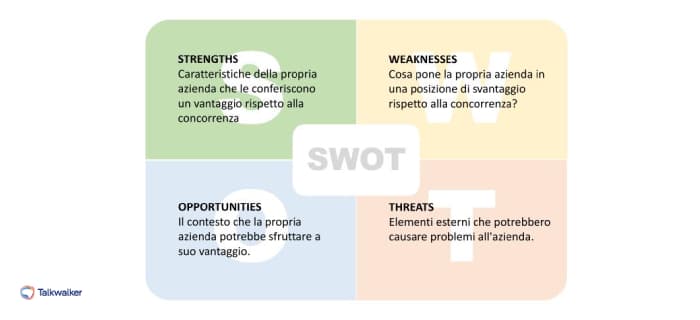
Analisi SWOT per l’ambiente interno ed esterno.
Si tratta di un’indagine che identifica i fattori interni ed esterni che possono influire sulle performance future del tuo team. I fattori interni sono i punti forti e deboli, mentre quelli esterni sono opportunità e minacce.
Analisi PEST - un elemento di gestione delle crisi, che garantisce che un’azienda sia pronta a cambiamenti dei fattori esterni, ad es. politici, economici, tecnologici ecc.
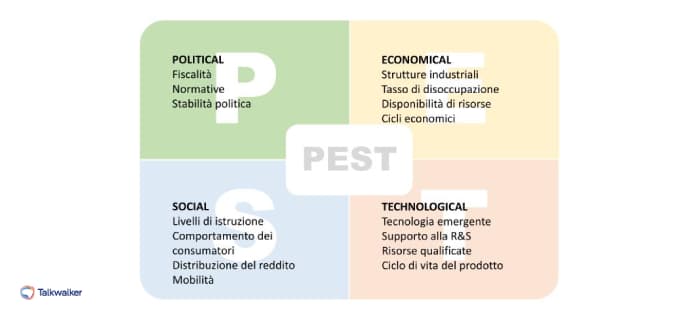
Analisi PEST per l'ambiente esterno.
Hai mai sentito parlare delle 5 forze competitive di porter?
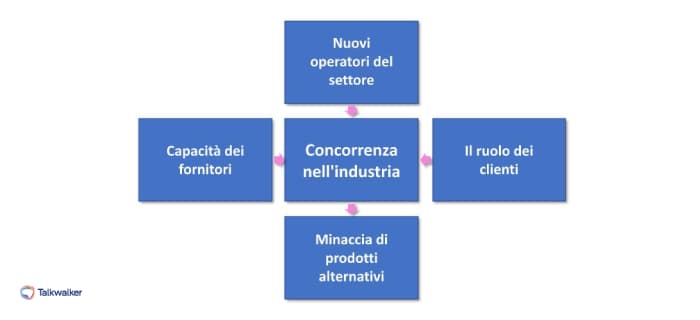
Analisi delle 5 forze competitive di Porter per l’ambiente esterno.
Michael Porter, docente alla Harvard Business School, riteneva che le aziende dovessero esaminare i fattori esterni alle loro organizzazioni, con un potenziale impatto sulle loro attività commerciali. Identificò cinque forze capaci di plasmare i mercati e le industrie. Tali forze possono essere utilizzate per misurare l’intensità della concorrenza, dell’attrattiva e della redditività di un'industria o di un mercato.
Spiegherò tutti i fattori di cui occorre tenere conto per condurre un’indagine del comportamento dei consumatori efficace. Se fatta bene, consentirà di identificare sfide e opportunità per migliorare la propria strategia di marketing.
Prima di tutto...
Quali sono i modelli di comportamento dei consumatori?
Iniziamo identificando i modelli di comportamento dei consumatori. Tali modelli includono...
Luogo o ubicazione dell’acquisto
Laddove numerosi supermercati vendono articoli di abbigliamento, DVD e computer insieme a pomodori e patate, i consumatori tendono a recarsi in negozi specializzati per acquistare questi prodotti fuori dalla portata degli alimentari.
Ovviamente, l’eccezione alla regola vuole che se quello è l’unico negozio disponibile per un consumatore, questo modello vada in pezzi.
I consumatori visitano vari negozi in diverse ubicazioni, confrontano i prezzi, esprimono delle preferenze per un brand o per un altro, insomma non restano fedeli ad un unico negozio. Per le aziende tradizionali, l’ubicazione va assolutamente tenuta in considerazione.
Tipologie e quantità di prodotti acquistati
Dando un’occhiata ai carrelli degli acquisti dei consumatori, alle loro conversazioni sui social media, ai siti di recensioni, si troverà un’utile Consumer Intelligence...
Quali articoli hanno acquistato?
E quanti articoli hanno acquistato per ciascun prodotto?
Hanno acquistato da te o dal tuo concorrente?
Il tipo e la quantità saranno influenzati da...
Situazione economica del consumatore
Prezzo del prodotto
Esigenze del consumatore in merito al prodotto
Deteriorabilità/resistenza dell'articolo
Disponibilità di scelta di prodotti
Ascolta i consumatori.
Grafico sul time lapse di Talkwalker - L’engagement di Coca Cola ripartito tra i social media.
Tempistica e frequenza dell’acquisto
Non ha senso gestire un negozio che apre solo nel pomeriggio se i consumatori vogliono fare i loro acquisti al mattino.
Verifica i modelli di acquisto dei consumatori e dai loro ciò che vogliono. Ciò di cui hanno bisogno. Per i siti di e-commerce questo non rappresenta un grosso problema. Tuttavia, dovrebbero garantire un servizio di assistenza clienti 24 ore al giorno, 7 giorni su 7.
Modalità di acquisto
Il modo in cui si sceglie di acquistare rivela un modello di comportamento dell’acquirente...
Si va al negozio. Si fa la fila alla cassa. Si paga in contanti/carta di credito. Fatto.
Online, si effettua l’ordine e poi si paga con carta di credito o in contrassegno. Senza dimenticare le spese di spedizione. Fatto.
Quali sono le tipologie di comportamento dei consumatori?
Esploratore
Acquirente impulsivo
Acquirente informato
Negoziatore
Cacciatori di affari
Fan del brand
Acquirente pratico
Guardatore di vetrine
Esploratore
Il sogno dei commercianti, questo consumatore ama fare acquisti. Non ha un’idea precisa di ciò che sta cercando ma è propenso a lasciarsi persuadere. Vetrine stravaganti, ovvi benefici e affaroni gli faranno mettere mano alle carte di credito.
Acquirente impulsivo
Questo consumatore riesce sempre a giustificare un acquisto di cui non ha bisogno.
IKEA è imbattibile nel catturare questo tipo di consumatore. Quante volte ti è capitato di andarci per comprare uno spremiaglio e hai dovuto fare spazio nel portabagagli per acquisti non programmati?
Acquirente informato
Probabilmente è l’acquirente a cui è più difficile vendere qualcosa. Ha fatto delle ricerche. E poi ne ha fatte altre ancora. Si tratta di acquirenti che amano i siti di recensioni. Potrebbe essere un’automobile. Potrebbe essere uno spazzolino da denti. Hanno fatto ricerche approfondite e sanno cosa stanno cercando.
Negoziatore
Non c'è da sorprendersi se i commessi si nascondono dietro ai manichini quando vedono entrare un negoziatore nel loro negozio. Il suo obiettivo è risparmiare. Avrà già visitato tutti i siti di confronto e sarà già stato in tutti i negozi della concorrenza, per cui può affermare con certezza di poter reperire un prodotto più a buon mercato.
Cacciatore di affari
Lo si vedrà aggirarsi intorno agli articoli in saldo, sia online che offline. Con le tasche piene di buoni e codici online e le tessere fedeltà nelle mani sudaticce. Sono maestri nel fare buoni affari, anche se si tratta di articoli di cui non si erano resi conto di avere bisogno.
Fan del brand
Ti sei mai chiesto che tipo di persona si accampa fuori a un negozio per aggiudicarsi l’ultimo modello di smartphone? O fa file di ore se un marchio di moda sta per lanciare una nuova collezione? O ama così tanto un negozio in particolare che spenderebbe di più per un prodotto anziché passare a un altro marchio?
I fan del marchio sono persone fedeli. Dagli una carta fedeltà e una newsletter mensile e ti consacreranno la loro vita.
Acquirente pratico
Un osso duro per i commercianti, perché questo consumatore si attiene scrupolosamente alla sua lista. Sia per limiti di budget che per la sua mente disciplinata, gli acquisti impulsivi non fanno parte del suo essere.
Guardatore di vetrine
Buona fortuna con lui!
4 tipi di modelli decisionali di acquisto?
Il comportamento decisionale di acquisto è ripartito in 4 categorie...
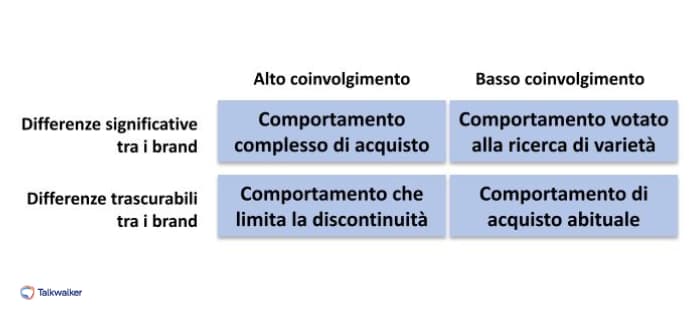
Comportamento decisionale di acquisto.
Comportamento di acquisto complesso
Il consumatore mostra un alto livello di coinvolgimento, a causa del fatto che il prodotto è costoso, rischioso o si tratta di un acquisto non frequente. Mi riferisco a case, automobili, yacht, assicurazioni... Avrà fatto numerose ricerche su marchi alternativi. Avrà fatto dei confronti prima di prendere la decisione definitiva.
Comportamento di acquisto che riduce le dissonanze
Continuiamo a parlare di acquisti costosi, rischiosi e non frequenti. La dissonanza post-acquisto, ossia il disagio post-vendita, si verifica quando un consumatore ha ancora dei dubbi in merito alla sua scelta. Ci sono discrepanze tra la sua valutazione iniziale e la sua decisione finale? Magari un amico gli ha instillato il dubbio dopo che ha scelto?
Comportamento di acquisto abituale
Questo tipo di comportamento di acquisto mostra una scarsa fedeltà al marchio. Relativo a prodotti a basso costo, con scarso coinvolgimento dell’acquirente. L’acquisto avviene quasi automaticamente, come con un pacco di zucchero, del pane, della carta igienica o dei fagioli. Non si fanno ricerche. Le informazioni sono trasmesse da spot in TV, giornali ecc., che creano familiarità con il marchio.
Comportamento di acquisto di ricerca della varietà
Si cercano emozioni con scarsa fedeltà al marchio. È il comportamento di un consumatore che intende mischiare un po’ le carte. Questo, tuttavia, non dipende dall’insoddisfazione per la scelta effettuata in precedenza, ma solo dal desiderio di provare una patatina dal gusto diverso, un sapone con un’altra profumazione o magari dei cereali diversi per colazione.
Cosa influenza il comportamento dei consumatori?
Tre sono i fattori che influenzano il comportamento di acquisto dei consumatori...
Personale - ha a che fare con gli interessi e le opinioni dei consumatori e può essere a sua volta influenzato dalla loro demografia
Psicologico - basato sulle percezioni e le mentalità
Sociale - gruppi di pari, famiglie, classi socio-economiche, social media
Ma andiamo più a fondo...
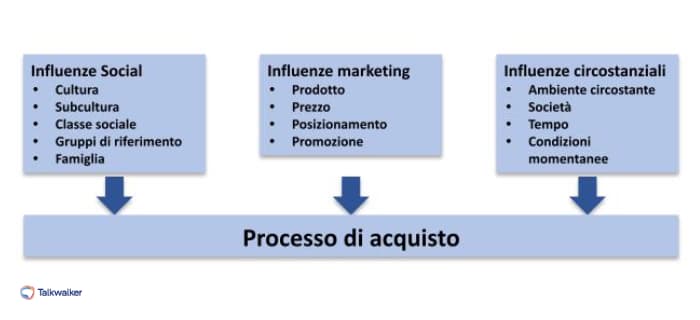
Influenze sul comportamento del consumatore.
Campagne di marketing
Una buona campagna di marketing convincerà i consumatori a comprare il tuo prodotto. Trova il messaggio di marketing giusto e puoi convincere i consumatori a cambiare marchio, passare a un prodotto più costoso, acquistare in grandi quantità.
IBM Institute for Business Value ha scoperto che il 72% dei brand che si posizionano meglio sono incentrati sul consumatore. Ascoltare e comprendere cosa porta il consumatore ad acquistare da un dato brand permette di sviluppare prodotti e servizi di successo.
Ti consiglio caldamente di leggere "I persuasori occulti", pubblicato nel 1957 da Vance Packard. Uno studio senza tempo del marketing del prodotto e degli sforzi fatti per comprendere, controllare e influenzare le persone nel nome del consumismo.
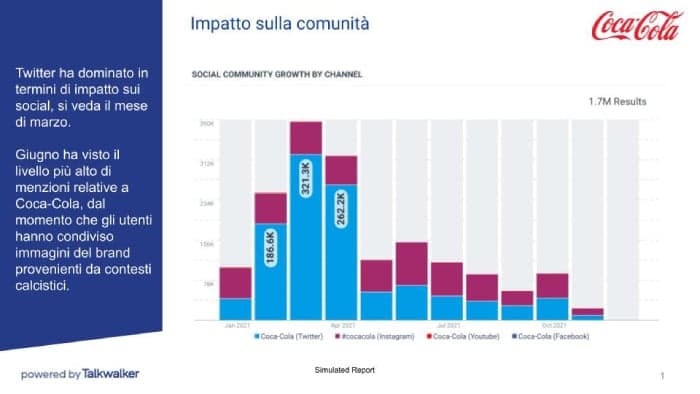
Coca-Cola domina il mercato delle bevande gassate grazie a un persuasivo messaggio di marketing. Dati presi dal template di report sui social media di Talkwalker.
Social media
Molti di noi sono sui social media... ogni singolo giorno. Ed essendo ormai parte integrante delle nostre vite, i social media giocano un ruolo fondamentale nell’influenzare le nostre decisioni di acquisto. Ecco come...
Influencer - gli scaltri influencer presenti sui social media taggano negozi, marchi e prodotti che, a quanto sembra, stanno utilizzando. Condividono una recensione positiva con i loro migliaia di fan. Un marchio che riconosce il suo obiettivo demografico opererà esercitando influenze che affascinano.
User-generated content - i social media sono canali di notizie, di opinioni, di recensioni. Ci interconnettono. Condividiamo le informazioni tra di noi. L’81% dei consumatori fa delle ricerche online prima di effettuare un acquisto. Ascoltiamo gli utenti di cui ci fidiamo e seguiamo i loro consigli. Lo UGC - contenuto generato dagli utenti, può essere scovato facilmente con Talkwalker video analytics.
Brands on social - c’è tanta gente lì fuori, devi distinguerti dalla massa. Considerando che i tuoi consumatori sono quasi certamente, e sicuramente lo saranno, sui social media, allora devi esserci anche tu. Fai sentire la tua voce sui social e ritagliati uno spazio.
Social media ads - includi messaggi pubblicitari a pagamento nella tua strategia di marketing per i social media per un targeting super-mirato.
Condizioni economiche
Quando l’economia è in forte crescita, i consumatori si sentono sicuri. Acquisteranno volontariamente prodotti costosi, a prescindere dalla loro situazione economica.
Allo stesso modo, durante una fase di recessione, le spese crolleranno.
Preferenze personali
Non importa quanto siano persuasive le campagne di marketing, non si riuscirà mai a convincere un bevitore di birra artigianale a passare alla birra lager. O un vegetariano a mangiare una bistecca di manzo. O ancora un fanatico di Star Wars a giurare fedeltà a Star Trek.
Le preferenze personali dei consumatori (gradimento, avversione, morali, scelte di vita, priorità, valori) sono radicate.
Pressione sociale
Amici, familiari, colleghi, conoscenti, influencer e altri consumatori possono manipolare le decisioni di acquisto.
Le recensioni dei consumatori, amici e familiari, e i siti di confronto sono i più affidabili quando si tratta di reperire informazioni su un prodotto. Alla base del pilastro della fiducia ci sono le sponsorizzazioni delle celebrità e i responsabili delle vendite che mostrano messaggi di vendita “dura”.
L’età gioca il suo ruolo, in modo particolare per le giovani generazioni- X, Y, Z - che tendono ad accettare di più le sponsorizzazioni degli influencer da parte di blogger, video blogger, podcaster, YouTuber, Instagrammer, e celebrità.
Potere di acquisto
Denaro.
La decisione di acquisto è influenzata anche dalle risorse economiche di cui si dispone. Potrebbe anche essere il miglior prodotto di sempre, con una campagna di marketing affascinante, ma se non si hanno i soldi...
In qualità di commerciante, vale la pena segmentare la tua base di clienti in virtù del loro potere di acquisto.
Segmentazione del comportamento dei consumatori
I consumatori si aspettano personalizzazione.
L’84% di loro sostiene che un brand li conquisterà se li tratterà come persone, non come numeri.
Vogliono che i marchi li ascoltino e diano loro prova di aver recepito il messaggio. A tale scopo, occorre utilizzare la segmentazione dei consumatori. Diamo un’occhiata alle sei principali tipologie di segmentazione del comportamento...
Benefici desiderati
Quando un consumatore acquista un prodotto, per esempio un detersivo in polvere, molte possono essere le caratteristiche che sta cercando. Mantenere bianchi i capi bianchi. Mantenere i colori vivaci. Avere un odore fresco. Essere anallergico. Mentre cerca il prodotto, il consumatore mostrerà quale di queste caratteristiche è la sua priorità. Ovvero il fattore motivante che lo spingerà verso una decisione d’acquisto.
A proposito - Ho un gran numero di capi neri, quindi starei cercando un detersivo che non li scolorisca.
Consumo fondato sull’occasione
Occasioni globali - vacanze, eventi stagionali, in occasione dei quali i consumatori faranno acquisti particolari
Occasioni ricorrenti - compleanni, anniversari, vacanze, acquisti mensili, acquisti giornalieriChi potrebbe resistere a un muffin con una buona tazza di latte scremato prima di andare al lavoro?
Occasioni rare - irregolari e difficili da prevedere, come un matrimonio, un funerale, un battesimo
Tasso di utilizzo
La frequenza con cui un consumatore acquista un prodotto è indice di fedeltà, abbandono, valore.
Fedeltà al brand
Ecco il tipo di persone da valutare più di tutte le altre. La loro fedeltà apporta valore permanente al tuo marchio. Amano il tuo prodotto. Prova a convincerle a diventare sostenitori del tuo marchio. È marketing gratuito. Segmentale in base al loro diverso grado di fedeltà e ricompensale con offerte esclusive. Gadget e campioni gratuiti.
Statistiche degli utenti
Ad esempio...
Non-utenti che non lo diventeranno mai
Prospetti
Acquirenti al primo acquisto
Utenti regolari
Utenti che preferiscono passare a un concorrente
Customer Journey
Verifica il tuo funnel di vendita. Segmenta i clienti in base alla loro ubicazione. Quanto sono prossimi all’acquisto. Potrai creare dei messaggi personalizzati per ciascun livello e aumentare il tuo tasso di conversione.
Individuerai anche i punti critici, in cui i clienti stanno uscendo dal processo.
Modello di indagine del comportamento dei consumatori
Prima di prendere delle decisioni affrettate sui consumatori, osserva e analizza il loro comportamento. Ascoltali e crea un rapporto con loro... prima che lo facciano i concorrenti.
Comincia a comprendere i consumatori da subito, con una dimostrazione gratuita della piattaforma #1 di Consumer Intelligence.

Consumer behavior in marketing
I’m always banging on about data. Collecting it. Analyzing it. Visualizing it. While you’ll find consumer insights, there are other factors to consider when looking at consumer behavior. Culture, society, income, age, attitude... also influence buyer habits. To see the full picture, you need to do a consumer behavior audit…
CTA - GET MY CONSUMER BEHAVIOR AUDIT CHECKLIST!
Talkwalker Analytics - demographics of Coca-Cola consumers.
Table of contents
What is consumer behaviour?
Why is understanding consumer behaviour important?
What is a consumer behaviour audit?
What are consumer behaviour patterns?
What are the consumer behaviour types?
4 types of buying decision behaviour?
What influences consumer behaviour?
Consumer behaviour segmentation
Consumer behaviour audit template
What is consumer behavior?
Consumer behavior definition - the decision process, influences, and actions that a consumer performs when purchasing a product.
Analyze and identify the consumer decision-making process - conduct a consumer behavior audit - and you’ll be able to target your marketing effectively.
Model of consumer behavior.
Why is understanding consumer behavior important?
Understanding, analyzing and keeping track of consumer behavior is critical for businesses.
How do consumers feel about your brand and/or products, and those of your competitors?
Why do they choose product A, rather than product B?
How do they research a brand and/or product?
How important are consumer reviews in their research - user-generated content?
Do they prefer to shop online or offline?
Talkwalker sentiment analysis will show you how consumers feel about your brand.
Recognizing what influences consumers’ purchasing decisions - off or online - will enable you to present your brand and products in the most alluring way. Creating a positive customer journey - smooth and unhindered - will encourage consumers to part with their cash.
According to Salesforce, 76% of consumers expect companies to recognize their needs and expectations. They want you to understand their behavior. Only then can you market your products to them effectively.
How many decisions do you make during the day? What do I want for lunch? Do I want to go for coffee? Should I buy those jeans?
Decisions we make automatically, significant to marketers. Understanding the mind of the consumer - their thought processes when making a decision - means that marketing teams can use these insights to target their strategies and increase revenue.
For instance, how many times have you stood in line at the checkout and thrown one of those sneakily placed chocolate bars into your basket? Or you’re about to click the Buy Now button when you spy things that other customers purchased. FOMO is strong! Into your cart goes more stuff. Do you need it?
Boom… a marketing win!
Ever tempted to buy something because everyone else did?It happens…
Establish a demographic breakdown of your consumer base…
Age group of consumers
Geographical location
Lifestyle of consumers
Social status of consumers
But, don’t presume to know your customers without extensive research and testing.
You assume loud colors are the way to attract teenagers? Ever met a goth?
What is a consumer behavior audit?
Part of your marketing planning.
Please say it’s part of your marketing planning.
You’ll examine consumer behavior at the start of your marketing planning, and continue to run audits throughout. It’ll look at both internal and external influences on your plan.
Your consumer audit will clarify opportunities and threats, and identify ways you can alter and improve your marketing plan. A consumer behavior audit checklist will help you answer the question... “what is the current marketing situation?”
To run your audit, you’ll need to include…
Your SMART goals. Only possible to set, if you understand your current position...
SMART - specific, measureable, achievable, relevant, timely.
Plan effective and achievable goals...
Specific - real numbers with real deadlines
Measurable - how you’ll track and evaluate your achievements
Achievable - work towards a goals that’s challenging, but possible
Relevant - ensure you have the resources to make it happen
Times - when you’ll achieve your goal
You should have several SWOT analyses already - for your company, and for your competitors...
SWOT analysis for the internal & external environment.
It’s an audit that identifies the internal and external factors affecting your team’s future performance. Internal factors are strengths and weaknesses, while external factors are opportunities and threats.
PEST analysis - an element of crisis management - ensures a company is prepared for a change in external factors, such as political, economical, technological, etc.
PEST for external environment.
Heard of Porter’s 5 Forces?
Porter’s Five Forces Analysis for external environment.
Michael Porter, a Harvard Business School professor, believed companies should examine factors occurring outside their organization with the potential to impact business. He identified five forces with the power to shape markets and industries. The forces can be used to measure the intensity of the competition, attractiveness, and profitability of an industry or market.
I’m going to explain all the factors that you need to take into account, to conduct an effective consumer behavior audit. Done properly, you’ll be able to identify challenges and opportunities to improve your marketing strategy.
First up…
What are consumer behavior patterns?
Start by recognizing consumer behavior patterns. These patterns include…
Place or location of purchase
While a lot of the larger supermarkets sell clothes, DVDs, computers, along with tomatoes and potatoes, consumers tend to go to specialist shops for these products outside the grocery range.
Obvs - exception to every rule - if that’s the only store available to a consumer, the pattern fragments.
Consumers visiting various stores in different locations - price comparisons, brand preferences - means they don’t remain loyal to one store. For bricks and mortar establishments, location has to be a consideration.
Types and quantity of products purchased
Take a look in consumers’ shopping carts, social media conversations, review sites... and you’ll find valuable consumer intelligence...
What items did they buy?
How many of each item was bought?
Did they buy from you, or your competitor?
Consider what they bought. How many of each item? Bulk buys, or luxury one-offs? The type and quantity will be influenced by…
Financial status of consumer
Price of the product
Consumer requirement of product
Whether the item is perishable/durable
Availability of product choices
Listen to consumers...Talkwalker time lapse graph - Coca-Cola engagement split across social media channels.
Time & frequency of purchase
No point in running a store that only opens in the afternoon, when consumers want to shop in the morning.
Check out the purchase patterns of consumers and give them what they want. What they need. For ecommerce sites, this is less of an issue. But, they should be wise to the fact that customer service will need to be 24/7.
Method of purchase
The way you choose to shop demonstrates a buyer behavior pattern...
You walk to the store. You queue at the checkout. You hand over cash/credit card. Done.
Online, you place your order, pay with your credit card or when the item is delivered. Don’t forget, delivery fees. Done
What are the consumer behavior types?
Browser
Impulse buyer
Informed shopper
Negotiator
Bargain hunter
Brand fan
Practical shopper
Window shopper
Browser
The marketers dream, this consumer loves to shop. They don’t have a fixed idea of what they’re looking for, but they’re open to persuasion. Funky displays, obvious benefits, and bargains will have them reaching for their credit cards.
Impulse buyer
This consumer can always justify a purchase that they don’t need.
Yikes. Sounds familiar.
IKEA has the prize for catching this type of consumer. How many times did you go for a garlic press, and have to make room in the trunk of your car for essential impulse buys?
Informed shopper
Possibly the hardest consumer to sell to. They’ve researched. And then, researched some more. These are the shoppers that love a review site. Could be a car. Could be a toothbrush. They’ve done extensive research, and they know what they want.
Negotiator
Don’t be surprised if you see sales assistants hiding behind mannequins when a negotiator enters their store. Their aim is to pay less. They’ll have visited every comparison site and traipsed around every competing store, so they can prove that they could get a product cheaper.
Bargain hunter
You’ll find them hanging around the reduced items, off and online. Pockets full of coupons and online codes, reward cards in their sweaty hands. A master at getting a good deal, even for items they didn’t realize they needed.
Okay, this is me, with a sprinkling of impulse buyer in the mix.
Brand fan
Ever wondered what kind of person camps outside a store for the latest smartphone release? Queues for hours when a fashion brand is launching a new collection? Loves a particular shop so much, that they’ll spend more on a product, rather than change to another brand?
Hey, who am I to point the finger. Whatever floats your boat.
The brand fan is a loyal subject. Give them a loyalty card and a monthly newsletter, and they’ll pledge their life to you.
Practical shopper
A toughie for a marketer, this consumer religiously sticks to their list. Whether due to budget constraints or a disciplined mind, impulse buying isn’t part of their makeup.
Window shopper
Good luck with this one, guys!
4 types of buying decision behavior?
Buying decision behavior is broken down into four categories…
Buying decision behavior.
Complex buying behavior
The consumer shows a high level of involvement, due to the product being expensive, risky, or an infrequent purchase. I’m talking house, car, yacht, insurance... Research of alternative brands will have been intense. Comparisons made before making the final decision.
Dissonance-reducing buying behavior
Again, we’re talking pricey, risky, and infrequent. Postpurchase dissonance - after-sales discomfort - comes about when a consumer doubts their choice. Are there discrepancies between their initial evaluation and their final decision? Did a friend plant a seed of doubt about their choice?
Habitual buying behavior
This type of purchasing behavior demonstrates little brand loyalty. For low cost products, with little consumer involvement. Purchased almost automatically - you buy your bag of sugar, bread, toilet paper, beans. No research is done. Information is received through TV ads, newspapers, etc., creating brand familiarity.
Variety seeking buying behavior
Thrill seeking with little brand loyalty. This is the behavior of a consumer looking to mix things up. Nothing to do with being dissatisfied with a previous choice, just wanting to try a different flavored chip, scented soap, breakfast cereal.
What influences consumer behavior?
Three factors can influence consumer buying behavior…
Personal - deals with consumers interests and opinions, and can be affected by their demographic
Psychological - based on perceptions and attitudes
Social - peer groups, family, socio-economic classes, social media
Let’s dig deeper...
Influences on consumer behavior.
Marketing campaigns
A good marketing campaign will persuade consumers towards buying your product. Find the right marketing message, and you can convince consumers to change brands, upgrade to a more expensive product, bulk buy.
Recommended reading… The Hidden Persuaders, published in 1957 by Vance Packard. Timeless study into product marketing and the efforts made to understand, control, and influence people in the name of consumerism.
Coca-Cola dominates the fizzy drink market with a persuasive marketing message.Talkwalker Analytics - share of voice, volume by competitor, net sentiment.Simulated social media report template.
Social media
Most of us are on social media… every single day. Because it’s such a big part of our lives, it plays a role in influencing our purchasing decisions. Here’s how…
Influencers - social media savvy influencers tag stores, brands, and products that they’re allegedly using. Sharing a positive review with there thousands of fans. A brand that recognizes its target demographic, will work with influences that appeal.
User-generated content - social media is a news channel, an opinion channel, a review channel. It connects us. We share information with each other. 81% of consumers research online before they make a purchase. We listen to users that we trust and take their advice.
User-generated content found with Talkwalker video analytics.
Brands on social - there’s a big crowd out there, and you need to stand out. Considering your consumers are almost definitely - of course they are - on social media, you need to be there too. Find your voice on social and cut through the noise.
Social media ads - include paid ads in your social media marketing strategy for super-focused targeting.
Economic conditions
When the economy is booming, consumers feel confident. They’ll willingly purchase expensive products, regardless of their financial situation.
By the same token, during a recession, spending will drop.
Personal preferences
It doesn’t matter how persuasive my marketing campaigns are, I’m not going to persuade a real-ale drinker to change to lager. A vegetarian to eat a beef steak. A Star Wars fanatic to change their allegiance to Star Trek.
Consumers’ personal preferences - likes, dislikes, morals, life-choices, priorities, values - are ingrained.
Peer pressure
Family, friends, colleagues, acquaintances, influencers, and other consumers can manipulate purchasing decisions.
Consumer reviews, friends and family, and comparative websites are the most trusted when it comes to sourcing information about a product. Bottom of the trust pile are celebrity endorsements and sales reps shoving a hard-sell down your throat.
Age does come into it, however, with younger generations - X, Y, Z - more accepting of influencer endorsements from bloggers, vloggers, podcasters, YouTubers, Instagrammers, and celebs.
Purchasing power
Money.
How much you have will affect your purchase decision. It could be the best product ever, with a funky marketing campaign that hits its target, but if you don’t have the cash…
As a marketer, it pays to segment your customer base according to their spending power.
Customer behavior segmentation
Consumers expect personalization.
84% say that a brand will win their business if they’re treated like a person, not a number.
They want brands to listen to them and prove they’ve heard what they’re saying. To achieve this, you’ll need to use customer segmentation. Let’s look at the six primary types of behavioral segmentation…
#1 Benefits sought
When a consumer buys a product - let’s say, washing powder - there can be several features that they’re looking for. Keeping whites white. Colors remain vibrant. Fresh smell. Non-allergenic. While researching the product, the consumer will demonstrate which feature is their priority. The motivating factor that will push them towards a buying decision.
BTW - I have an abundance of black clothing, so I’d be looking to keeping blacks black.
#2 Occasion or timing based
Universal occasions - holidays, seasonal events, when consumers will make particular purchases
Recurring occasions - birthdays, anniversaries, holidays, monthly purchases, daily purchases
Who can resist a skinny latte and muffin on the way to work?
Rare occasions - irregular and hard to predict - wedding, funeral, christening
#3 Usage rate
How often a consumer purchases a product, indicates loyalty, churn, value.
#4 Brand loyalty
These are the guys you should value above all others. Their loyalty brings a lifetime value to your brand. They love your product. Try to persuade them to become brand advocates - free marketing. Segment them according to how loyal they are. And spoil them. Reward them with exclusive offers. Freebies.
#5 User stats
Examples include…
Non-user - never going to be one
Prospects
First-time buyers
Regular users
Leavers - gone to a competitor
#6 Customer journey
Check out your sales funnel. Segment customers according to where they are. How close to buying. You can then create personalized messages for each stage, and increase your conversion rate.
You’ll also identify sticky areas, where customers are falling out of the process.
Consumer behavior audit template
Before making decisions based on gut feelings about consumers, watch and analyze their behavior. Listen to them and build a relationship... before your competitors do.
Conduct a consumer behaviour audit to find opportunities and threats. Identify ways you can update and improve your marketing plan.
Download my consumer behavior audit and answer the question... “what is the current marketing situation?”
CTA
